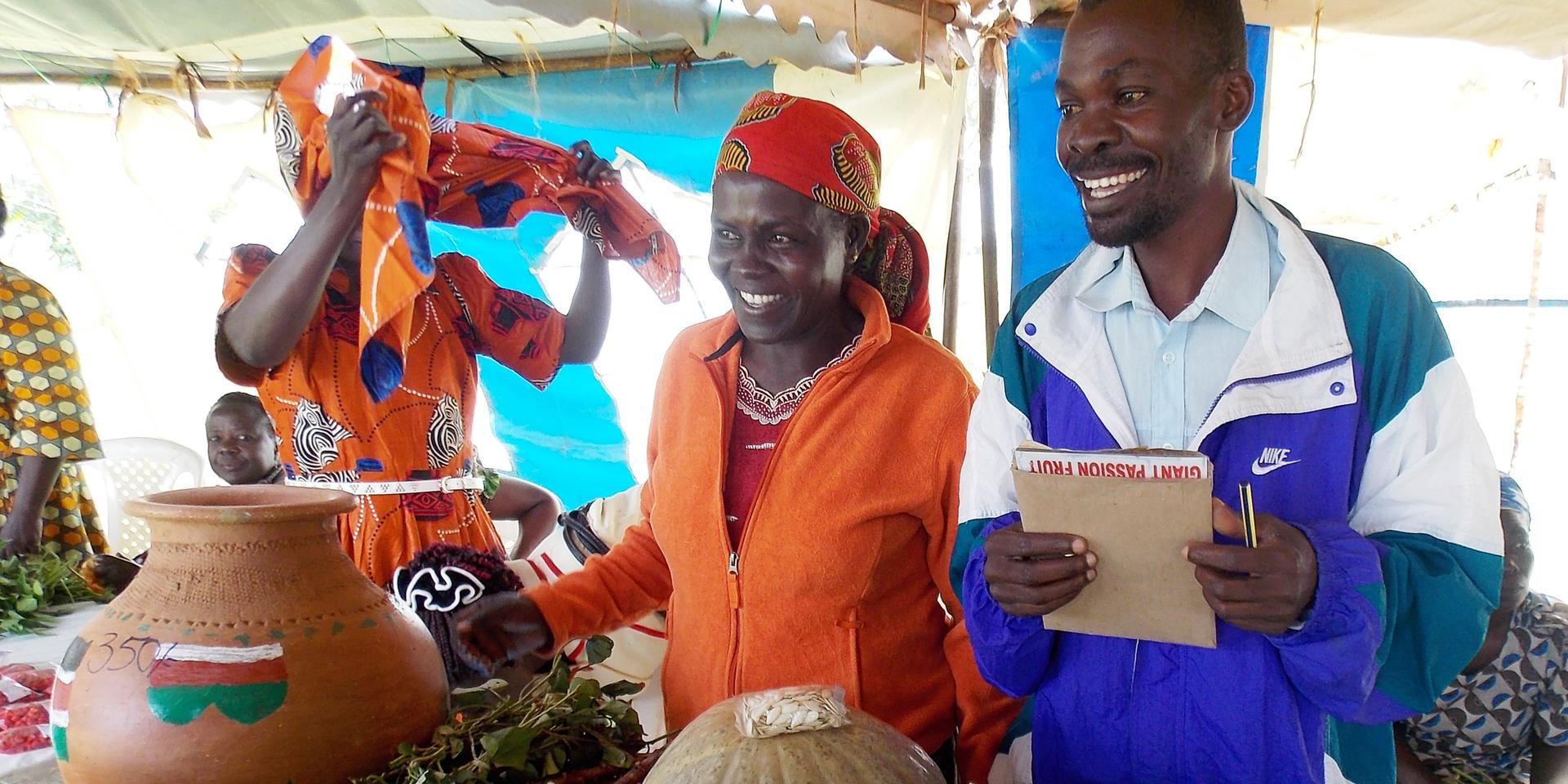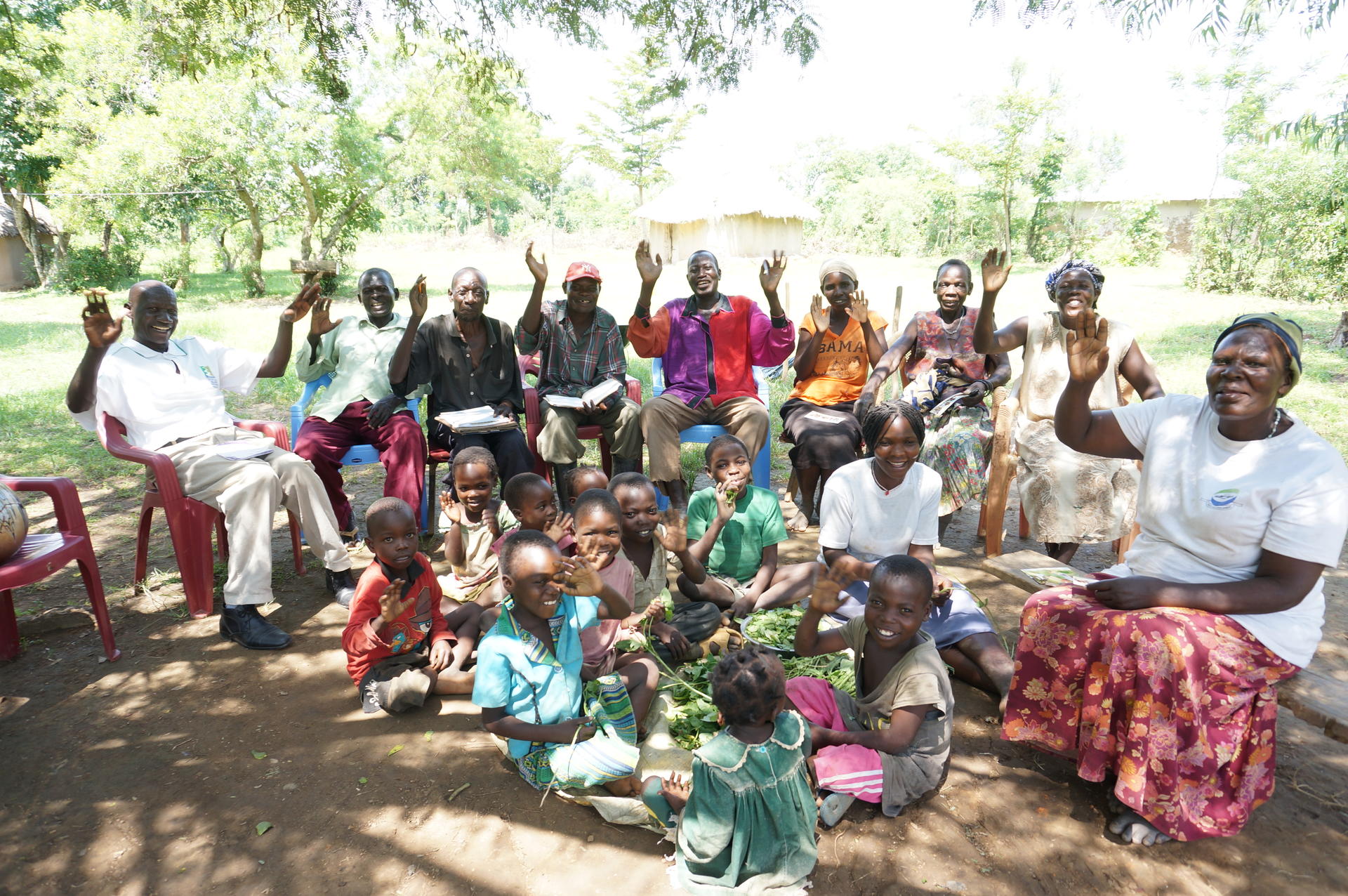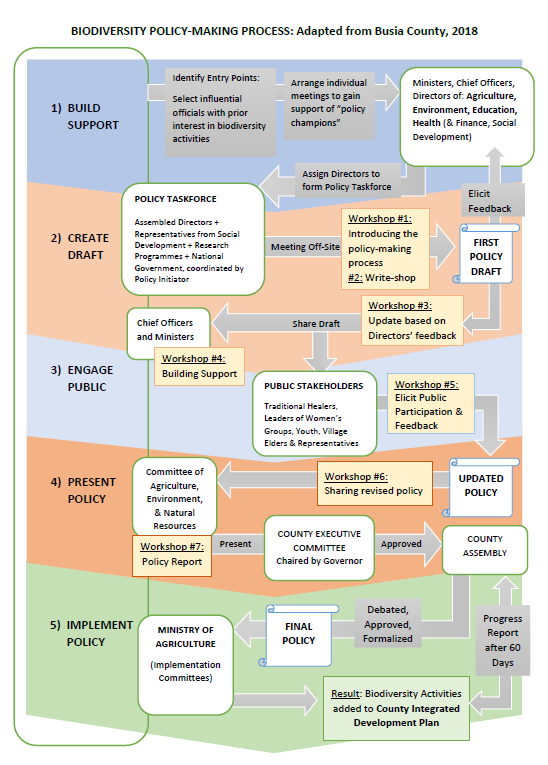Blog Busia, first county in Kenya to endorse a Biodiversity Conservation Policy

Busia has become the first of Kenya’s 47 counties to endorse a Biodiversity Conservation Policy. Emphasizing the economic and nutritional potential of underutilized crops, this policy represents the culmination of Bioversity International’s efforts bringing together farmers, public stakeholders, researchers, and government representatives to promote increased production and consumption of indigenous species.
Unlocking the health potential of local biodiversity
Located in Western Kenya, Busia County is home to a range of indigenous crops typically found only in smallholder farms and household gardens. Although many of these plants are associated with local culture and traditional health practices, their cultivation is low compared to that of staple crops like maize.
However, nutrient-rich native species offer a promising solution to the region’s high rates of malnutrition (over 26%), stunting, anemia, and other dietary deficiencies. Since 2012, the Biodiversity for Food and Nutrition Initiative has partnered with Kenyan universities and research institutes to conduct nutrient analyses of local crops; for example, the African nightshade, which contains 16 times more iron than kale (see Graphic 1).
In addition, locally-adapted crops can tolerate harsh environmental conditions (finger millet and Bambara groundnut are pest and drought-resistant), making them sustainable growing choices that build smallholder farmer resilience.

Graphic 1. Iron levels in African leafy vegetables. (Sources: BFN composition table (2018), Abukutsa-Onyango (2010), West African Food Comp tab.)
Conservation through use
Busia’s Biodiversity Conservation Policy recognizes the benefits of these underutilized crops, and has allocated resources to conserve and promote regional agrobiodiversity, with specific provisions for designated conservation areas and further incorporation of native species into the school curriculum. In addition to raising awareness of the benefits of local biodiversity, this will build market capacity, ensuring that farmers can receive fair prices in exchange for their produce. This represents an exciting procurement model in which smallholder farmers supply African leafy vegetables directly to local institutions such as schools and hospitals.

Community gathering during field research. Credit: Alessandra Grasso, 2015
A partnership-based process
The policy is the culmination of nearly two years of engagement and research, as the Biodiversity for Food and Nutrition Initiative, with support from The Australian Centre for International Agricultural Research (ACIAR), has worked closely with a range of multi-level partners including policymakers, farmer groups, women’s organizations, and school procurers to spread awareness regarding the value of indigenous species. Projects have included a Farmer Business School that trained 4,000 farmers on best practices, nutrient analysis of 18 foods contributing to an updated Food Composition Table for Kenya, a local recipe book, and numerous food fairs and festivals. The final policy document was the result of a prolonged writing and approval process involving public participation, as well as the formation of a cross-sectoral policy taskforce (for a comprehensive view see Graphic 2).
Busia's policy focus is four-fold:
- Enhancing biodiversity conservation;
- Improving access to and ensuring equitable sharing of benefits accrued from access and utilization of county biodiversity;
- Promoting biodiversity utilization; and
- Promoting biodiversity research and development.

Graphic 2. The Policymaking Process in Busia County. Credit: Bioversity International/E. Gee
Looking ahead
While the process necessitated overcoming numerous barriers, it has been a strong step forward and a testament to a multi-level partnership-based approach to increasing awareness, providing evidence, and influencing policy. As home-grown school feeding initiatives gain wider recognition, this example can be adapted to address conservation and nutrition concerns elsewhere. In the words of National Project Coordinator Dr. Victor Wasike,
"This will be a case study that other counties can learn from and replicate."

African Nightshade berries. Credit: Bioversity International/T. Borelli
About Biodiversity for Food and Nutrition
The GEF 'Mainstreaming biodiversity for nutrition and health' initiative is led by Brazil, Kenya, Sri Lanka and Turkey and coordinated by Bioversity International, with implementation support from the United Nations Environment Programme (UNEP) and the Food and Agriculture Organization of the United Nations (FAO), and additional support from the CGIAR Research Program on Agriculture for Nutrition and Health.
It was launched in April 2012 to address growing concerns over the rapid disappearance of agricultural biodiversity, particularly traditional crops and wild species with nutritional potential.
In Kenya, the initiative has been supported by The Australian Centre for International Agricultural Research (ACIAR) and partnerships with local farmer group Sustainable Income and Generating Investment (SINGI) and the Kenya Agricultural and Livestock Research Organization (KALRO). For more details visit: www.b4fn.org
